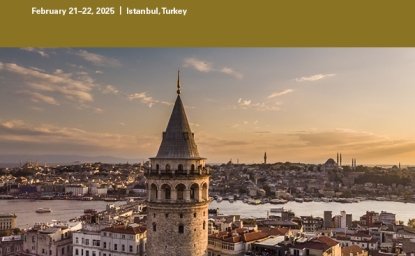NATO’s Difficult Trifecta
"This week's NATO summit of sixty world leaders may be the most important such meeting since the organization—the world’s mightiest military alliance—was created, in 1949," writes Robin Wright.
"This week's NATO summit of sixty world leaders may be the most important such meeting since the organization—the world’s mightiest military alliance—was created, in 1949," writes Robin Wright.

The lordly Celtic Manor, a Welsh spa and golf resort down the road from Cardiff, will play host this week to a NATO summit of sixty world leaders. It may be the most important such meeting since the organization—the world’s mightiest military alliance—was created, in 1949. And it may determine what the United States does next on a trifecta of particularly troubling crises.
The Islamic State (a.k.a. ISIS, or ISIL) has succeeded in redrawing the map of the Middle East. It poses a greater threat than Al Qaeda—and one that extends well beyond its “caliphate,” carved out of Iraq and Syria and now the size of Indiana. The recent American intervention—more than a hundred and twenty air strikes since August 8th—has destroyed a few dozen armed pickup trucks, mortar positions, and roadside bombs in the dusty scrubland of northwest Iraq. Last week, the Defense Department put the cost of these operations at five hundred and sixty million dollars, yet ISIS remains entrenched. Yesterday, the group released a video purporting to show the beheading of an American journalist, Steven Sotloff. It was the second such release in two weeks. In Estonia this morning, President Obama, who is en route to Wales, said, “One of our goals is to get NATO to work with us to help create the kinds of partnerships regionally that can combat not just ISIL but these kinds of networks as they arise and potentially destabilize allies and partners of ours in the region.”
In Afghanistan, the flaws and fraud in the country’s presidential election, held in April, threaten to spark a new conflict between ethnic groups—a conflict separate from the Taliban insurgency—just as NATO withdraws its troops. A runoff was held in June, again plagued by fraud. Even if the two rival candidates eventually form a coalition government, as Secretary of State John Kerry has tried (twice, since mid-July) to arrange, there is widespread fear that they won’t really share power or provide long-term stability. Could thirteen years, thousands of lives, and hundreds of billions of dollars all have been spent for so little? For political anarchy?
Meanwhile, Russia’s corrosive advances in Ukraine challenge the international order. In a private telephone call with the president of the European Commission, Vladimir Putin reportedly boasted that he could “take Kiev in two weeks” if he wished. Europe is shaken by fears that Putin might try similar incursions in the Baltic states, again in the name of protecting Russian-speaking residents. Russia would then be pressing into Europe from both the east and the north. “A great war has arrived at our doorstep, the likes of which Europe has not seen since World War II,” the Ukrainian Defense Minister, Valeriy Heletey, proclaimed in a Facebook post on Monday.
At the NATO summit, Obama, flanked by his Secretaries of State and Defense, will seek to galvanize the international community on all three crises, pool resources, build credibility, and defray costs. The gathering will include the twenty-eight NATO members, from North America and Europe, as well as some thirty other leaders from four other continents, representing countries as far-flung as Mongolia and the island nation of Tonga. (Though Ukraine is not a full NATO member, President Petro Poroshenko is scheduled to be in Wales.)
On paper, NATO’s numbers imply power. Its combined troop strength exceeds 3.3 million, and the members’ combined military budgets represent well over half of the world’s defense spending—the finest technology, and the most extensive matériel. To cap it off, seven of the eight former members of the Warsaw Pact, NATO’s Soviet-era rival, now belong to NATO.
Yet NATO seems to have less nerve and energy than it once did. It has focussed more on preventing or containing new fires than on putting out existing blazes raging in Europe, the Middle East, and South Asia. Its recent stats aren’t encouraging, either. Since 2001, NATO has spread its wings beyond the European theatre (its original mandate), into the Middle East, Asia, and Africa. The first of these deployments was in Afghanistan, after the September 11th attacks, when NATO invoked Article 5 of the North Atlantic Treaty. (“An attack on one is an attack on all,” as Obama put it in a speech in Tallinn this morning.) In 2004, NATO formed a training mission for Iraqi security forces. And in 2011 it authorized warplanes to intervene in Libya. That air campaign was pivotal in ousting Muammar Qaddafi. But today Afghanistan teeters. Iraq and its military are in a shambles. Libya is a virtual failed state.
NATO initially planned for the Wales summit to focus on its accomplishment in seeing Afghanistan through its first democratic transition, after the alliance’s longest military intervention. But one head of state who will be missing from the gathering is the new Afghan president, since the votes are still being recounted. There was hope that both candidates might show up, but the latest talks between their two camps over how to share power collapsed—again—over the weekend.
Instead, NATO will create a “spearhead” military force—around four thousand troops—capable of deploying in hot spots within forty-eight hours. “This spearhead would be provided by allies in rotation . . . ready to respond where needed with air, sea, and special-forces support,” the NATO Secretary-General, Anders Fogh Rasmussen, told reporters on Monday. It will “travel light, but strike hard,” he said.
The nimble new force is part of NATO’s response to Russian aggression in Ukraine, which shares borders with a handful of member states. It is a message to Moscow: Don’t move any closer. NATO’s formal announcement will surely be accompanied by tough talk.
But the spearhead may prove little more than a palliative, a way to make the assembled powers feel as if they have a mechanism in place in case something else happens. It appears reactive, a kind of military tit-for-tat, and it does nothing to reverse Ukraine’s dismemberment. (It might even provoke Russia.) Rather than resolve the underlying problems, it merely reflects, writ large, the quandary in Washington.
The opinions expressed here are solely those of the author.


The Global Europe Program is focused on Europe’s capabilities, and how it engages on critical global issues. We investigate European approaches to critical global issues. We examine Europe’s relations with Russia and Eurasia, China and the Indo-Pacific, the Middle East and Africa. Our initiatives include “Ukraine in Europe”—an examination of what it will take to make Ukraine’s European future a reality. But we also examine the role of NATO, the European Union and the OSCE, Europe’s energy security, transatlantic trade disputes, and challenges to democracy. The Global Europe Program’s staff, scholars-in-residence, and Global Fellows participate in seminars, policy study groups, and international conferences to provide analytical recommendations to policy makers and the media. Read more


